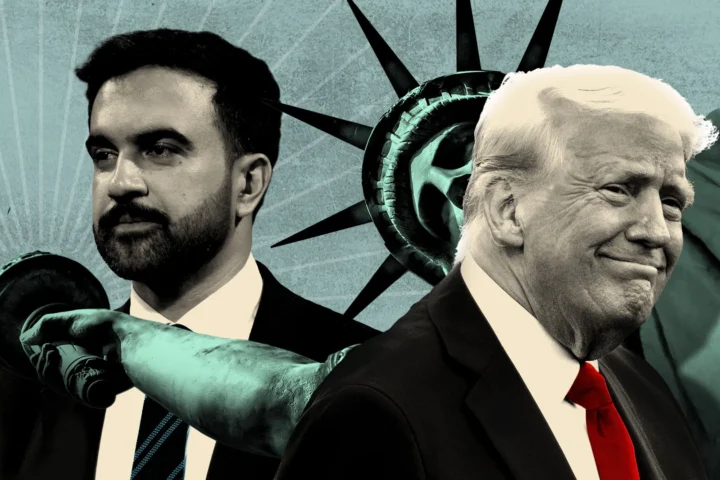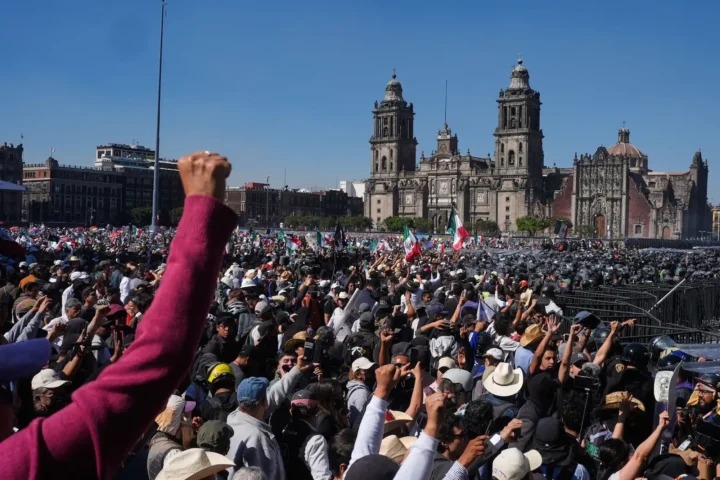Abstract
The implementation of extensive tariffs by President Donald Trump, including a planned escalation to 104% on Chinese imports and a 10% baseline tariff on most global imports effective April 5, 2025, presents significant economic implications. This research systematically examines the correlation between tariff imposition and resultant economic impacts through historical and projected analyses.
The imposition of extensive U.S. tariffs under the Trump administration correlates strongly with adverse economic outcomes, characterized by significant inflationary pressures, increased recessionary risks, and broader global economic disruptions. While initially designed to protect domestic industries, the resultant economic trade-offs highlight substantial drawbacks, including consumer price hikes, employment losses, sectoral disruptions, and geopolitical tensions. Moving forward, policymakers face the complex challenge of balancing short-term protectionist objectives against maintaining macroeconomic stability, calling for strategic agility to mitigate substantial collateral economic damage.
Overview of the 2025 Tariff Policy
The Trump administration’s 2025 tariff policy marks a decisive shift towards protectionism. A baseline tariff of 10% will affect virtually all imports except those compliant with the United States-Mexico-Canada Agreement (USMCA). Specific countries face even steeper rates: a cumulative duty of 104% on China, 50% on Cambodia and Vietnam, and 20% on the European Union. Moreover, targeted sectors like automotive and steel products face a separate 25% tariff. Revenue projections estimate this policy to generate approximately $2.9 trillion over the subsequent decade, constituting the largest tax hike since 1982.

Immediate and Near-term Economic Impacts
Tariff implementations typically manifest first in price adjustments and immediate demand contractions. A projected $800 billion reduction (25%) in imports for 2025 signifies significant supply-chain disruption, resulting in a GDP contraction of approximately 0.7%. These initial disruptions propagate through various economic channels, including price inflation, consumer spending, business investments, and employment.
Inflationary Pressures and Consumer Costs
Historically, tariffs directly correlate with elevated consumer prices due to increased import costs being transferred downstream. The planned tariffs exemplify this, where popular consumer goods, such as iPhones, may see price hikes of up to $350, while automotive prices could surge between $4,000 to $10,000. Historical evidence supports these projections; notably, tariffs on imported washing machines between 2018–2023 resulted in a 34% price increase. Broader inflationary impacts are also anticipated through raised input costs for key commodities such as steel and aluminum, potentially cementing “sticky inflation” above 4%, a phenomenon highlighted by JPMorgan CEO Jamie Dimon.
Risk of Recession and Economic Contraction
The relationship between tariffs and recession risks is evident historically and supported by current economic forecasts. Goldman Sachs currently estimates a 45% chance of recession if tariff implementations are moderated, whereas full enactment significantly elevates this probability. JPMorgan corroborates this assessment, assigning a 60% probability of recession, attributing the increased risk to declining business investment confidence and diminished consumer purchasing power. Employment projections reflect this, forecasting a rise in unemployment from approximately 4% to 5% by late 2025, resulting in an estimated loss of 605,000 jobs.
Threat of Stagflation
Stagflation—characterized by concurrent high inflation and stagnant economic growth—emerges as a critical risk from prolonged tariff implementations. Tariffs drive up import prices and, indirectly, domestic goods, suppressing demand and constraining economic growth. Deutsche Bank forecasts exemplify this risk, predicting 2025 GDP growth at under 1% coupled with inflation at approximately 4.4%, highlighting stagflation as an increasingly plausible scenario.
International Retaliatory Measures
The escalation of tariffs invariably invites retaliatory measures. China’s stance of engaging in retaliatory duties ranging from 10–15% on significant U.S. sectors, notably agriculture and technology, exemplifies the immediate international backlash. Similarly, the European Union’s response includes levying tariffs totaling €26 billion on targeted American exports such as bourbon, motorcycles, and steel products. Moreover, close trading partners like Canada and Mexico plan 25% tariffs on U.S. steel, aluminum, and energy exports, amplifying the adverse effects on domestic exporters and further distorting trade relationships.

Disruptions in Supply Chains
Industry-specific disruptions further underscore the systemic economic impact. The automotive sector faces intricate complications under the USMCA due to cross-border parts trade, driving production costs upward and creating inefficiencies. Technology and energy sectors also suffer significantly, as Chinese-origin electric vehicles and components attract prohibitive 104% tariffs, and Canadian energy imports face additional 10% tariffs, exacerbating sectoral uncertainties.
Geopolitical Fragmentation
Beyond economics, extensive tariffs contribute to geopolitical fragmentation, weakening alliances and fostering global uncertainty. The remarks from financial leaders, including Jamie Dimon, highlight the strategic risks of alienating allies, advocating instead for engaging partnerships with nations like India and Brazil rather than coercive economic policies. BBVA Research echoes these concerns, noting that tariffs undermine market efficiency, reducing global economic welfare and stability.

Long-Term and Distributional Economic Consequences
Household and Socioeconomic Impacts
An often-overlooked correlation involves tariffs’ distributional impacts on households. Tariffs function similarly to regressive taxes, disproportionately impacting lower- and middle-income households through elevated consumer prices. The projected per-household tariff burden averages $1,900 annually by 2025, leading to an approximate 1.9% reduction in after-tax incomes across all economic brackets. Notably, the top 1% income earners experience a slightly lesser income reduction (1.6%), whereas middle-income families bear a heavier relative impact (approximately 2%), thereby intensifying existing socioeconomic disparities.
Historical Precedents and Lessons
Historical instances provide essential context for current tariff policies. The 2018–2019 U.S.-China trade war, which reduced GDP by about 0.2% and eliminated approximately 142,000 jobs, offers contemporary parallels. More historically severe, the Smoot-Hawley Tariff Act of 1930 significantly exacerbated the Great Depression, cautioning contemporary policymakers against excessive reliance on tariffs as an economic strategy.
Uncertainty and Policy Instability
The volatility inherent in tariff negotiation exacerbates market uncertainty, impacting long-term business planning and investor confidence. President Trump’s unpredictable approach, exemplified by last-minute tariff negotiations such as those with South Korea, contributes substantially to market anxiety. Additionally, ongoing legal challenges and bipartisan legislative efforts aimed at curtailing executive tariff powers further amplify economic uncertainty and instability.
References and Further Reading
- Tax Foundation. “Trump Tariffs: The Economic Impact of the Trump Trade War.” Published April 4, 2025. Available at Tax Foundation.
- Chatham House. “Trump’s Tariff Policy Undermines His Own Agenda and Foundations of US Economic Power.” Published March 26, 2025. Available at Chatham House.
- CNBC. “Trump Tariffs ‘Will Increase the Unemployment Rate to Recessionary Levels,’ Says Economist.” Published April 8, 2025. Available at CNBC.
- New York Times. “Trump Maintains 104% China Tariffs as U.S. Officials Signal Openness to Talks.” Published April 8, 2025. Available at New York Times.
- Economic Times. “Trump’s Tariffs to Hit THESE Americans the Hardest for Three Key Reasons.” Published April 7, 2025. Available at Economic Times.
- WITA (Washington International Trade Association). “Trump Tariffs: Tracking the Economic Impact of the Trump Trade War.” Published March 3, 2025. Available at WITA.
- Times of India. “Explained: How Unfair Are Donald Trump’s Tariffs, What Is India’s Relative Advantage, and What Should It Do?” Published April 8, 2025. Available at Times of India.
- CBS News. “China Vows to Fight Trump’s Tariff War ‘to the End’ as It Blasts U.S. ‘Unilateral Bullying’.” Published April 8, 2025. Available at CBS News.
- BBC News. “What Are Tariffs and Why Is Trump Using Them?” Published April 2, 2025. Available at BBC News.
- Oxford Economics. “Tariffs and Their Global Impact: A Note from the Desk of Our Chief Economist.” Published April 8, 2025. Available at Oxford Economics.
- Investopedia. “Trump’s Wide-Ranging Tariffs Could Complicate Supply Chains.” Published April 7, 2025. Available at Investopedia.
- Reuters. “Trump Tariffs Pile Stress on Ailing World Economy.” Published April 2, 2025. Available at Reuters.











